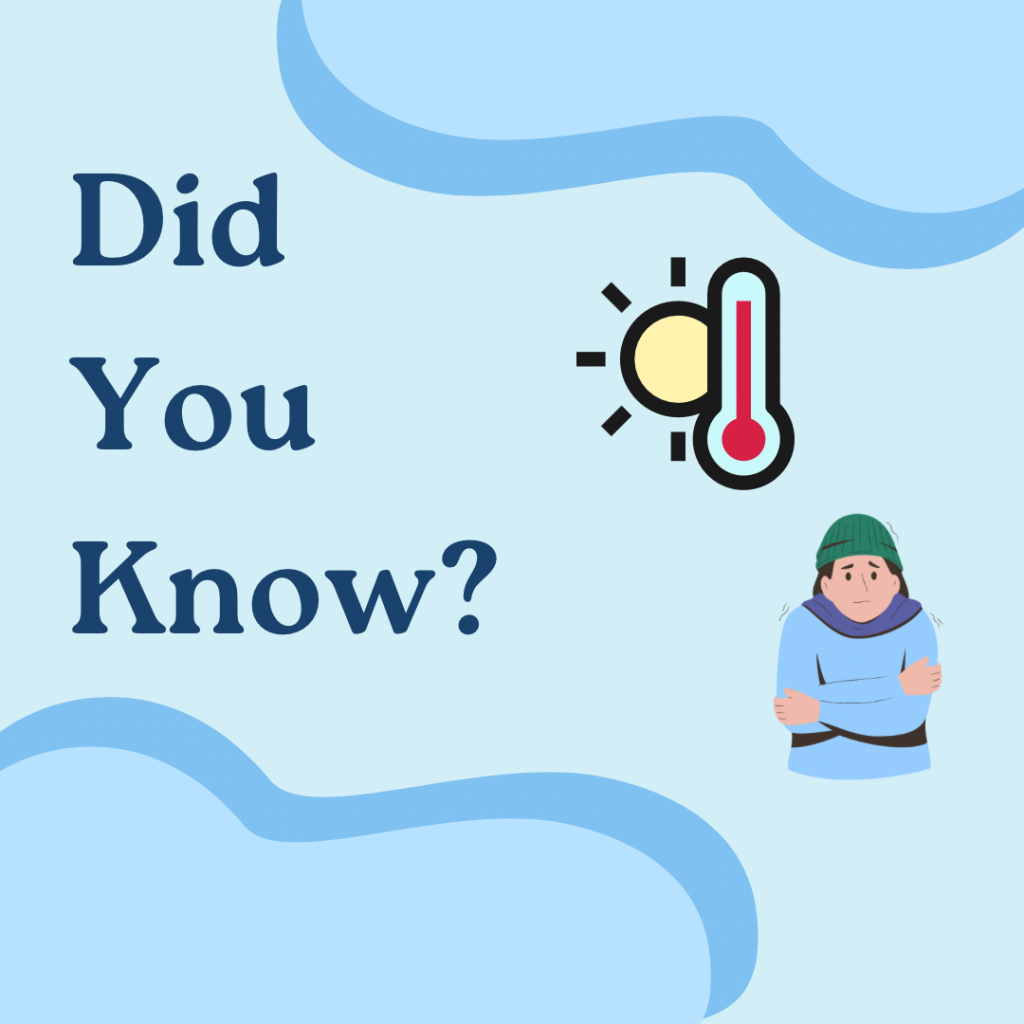
Did you know that our muscles are involved in regulating our body temperature?
Our muscles work with our brain, skin and nerves to respond to fluctuations in our body temperature due to factors such as our environmental temperature and sickness.
Cells around our body detect our core temperature and whether it is too hot or too cold. They send this information via our nerves to the brain for the information to be processed. Then our brain decides whether we need to increase or decrease our temperature.
What happens if we get too hot or too cold?
Typically, our body temperature should fall between 35.5 and 37.5 degrees Celsius. When our temperature goes too high it is referred to as hyperthermia (also called a fever) or when it goes too low it is referred to as hypothermia.
Our natural body temperature is within this range as it is the ideal temperature for all of the functions of our body including cell growth, contractions of our heart and other organ functions.
When we have a high grade fever (above 40 degrees Celsius), our cells stop functioning effectively which can lead to cell death and damage to our body tissues including our organs. This is usually beneficial during an infection as it attempts to kill or reduce the spread of infective cells, however, it cannot be sustained for long periods of time or occur outside of a sickness (such as the flu).
When we experience hypothermia (below 35 degrees Celsius), our cells work more slowly, causing our heart rate to reduce and signals between different areas of our body to weaken.
How do our muscles impact our body temperature?
When we are cold, our skeletal muscles repeatedly contract to create heat – this is why we shiver!
In addition, the muscles close to the hair follicles of our skin will contract in order to make our body hair stand “up” (known as goosebumps) in an attempt to keep warm air close o the skin.
When we are too warm, the muscles of our blood vessels relax, this widens the blood vessels, allowing our blood to get closer to our skin level so heat can be lost through the skin.
Our blood vessels constrict (tighten) when we are too cold, this narrows the blood vessels, moving blood away from the skin to conserve heat.
Other ways we regulate our body temperature:
When we are too warm we also sweat! This allows heat to escape the body from our skin as the sweat evaporates (dries).
Cellular metabolism refers to the process where our cells create energy. When this occurs, heat is produced as a by-product. This means that cellular activity creates heat. Our body can increase or decrease this activity to produce more heat or reduce our heat production. For example, if we are too hot our cellular activity reduces to minimise our heat production.
How can we stay cool?
We are also able to help our body with regulating its core temperature through behavioural changes. This includes:
- Staying inside or in the shade when outside
- Drinking cold water
- Wearing looser clothing
- Take a cold shower
- Go for a swim
- Use light bedding for sleep
How can we stay warm?
- Put on a jumper when going outside
- Thicker blankets during cold weather
- Drink a warm beverage such as a hot chocolate
- Turn on a heater
- Exercise
Find more of our health tips here.
Book an appointment with us here or call us on 9651 5559.
Sources:
Richardson, M. 2020. How does the body regulate temperature? Brain Facts. https://www.brainfacts.org/brain-anatomy-and-function/body-systems/2020/how-does-the-body-regulate-temperature-100720
Sheryl, Z. 2021. What is thermoregulation, and how does it work? Medical News Today. https://www.medicalnewstoday.com/articles/thermoregulation
